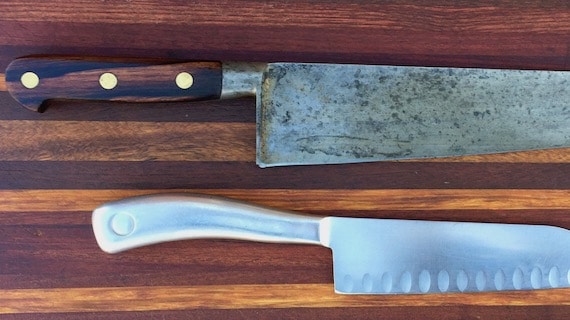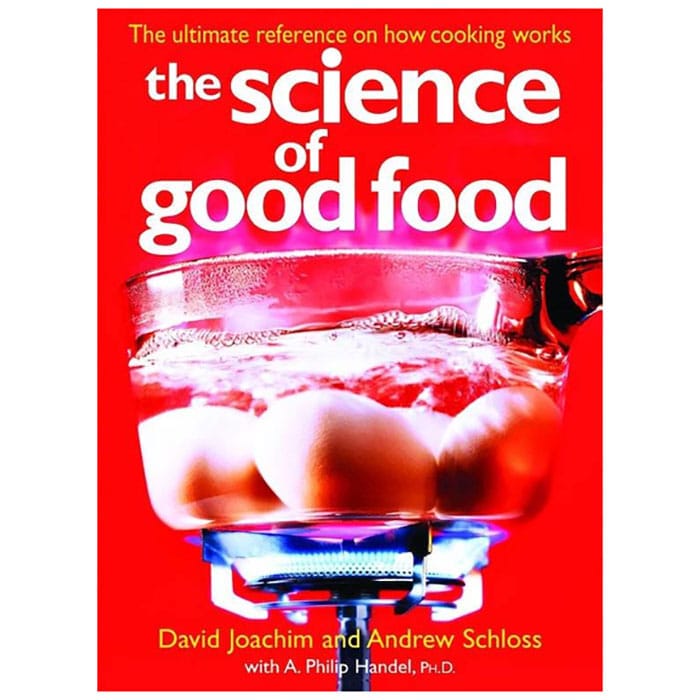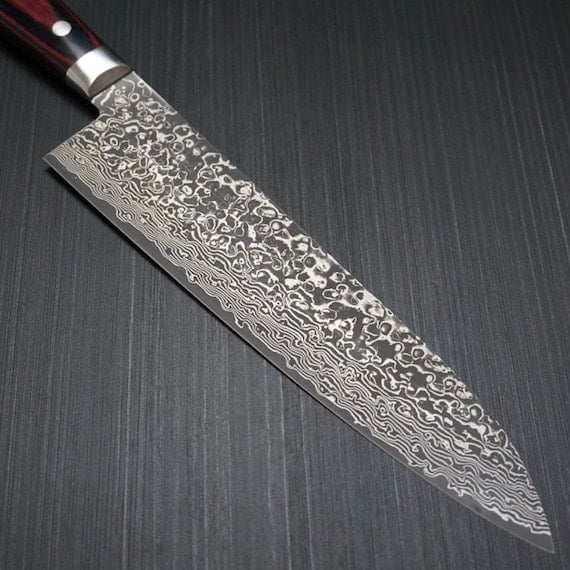Here’s What Goes Into Making a Great Knife
Before you drop serious cash on a knife, bone up on what distinguishes a good knife from a great one. Different metals, shaping techniques, and manufacturing technologies all influence how a knife sharpens, dulls, feels in your hand, and holds up over the long haul.
Looking for specific recommendations among knife brands? First, take a look at Everything You Need to Know About Knives here. Then check out our knife buying guide here. Either way, this article will give you a little more insight into what goes into making a knife that’s worth the price tag.
Knife Materials and Cutting Qualities
A knife’s cutting qualities are determined primarily by the material and weight of the blade, the way the blade is shaped and ground, and how the knife is constructed.
Carbon steel: Among the first metals used for making knives, carbon steel is an alloy of iron with about 0.45 to 0.5% carbon. It can be brittle and snap under stress. The iron in carbon steel can also discolor from acidic foods and transfer iron-like metallic flavors to foods. Carbon steel rusts easily from oxidation, so it must be kept bone dry, and it is often lubricated like cast-iron cookware to prevent rust. But carbon steel blades, eventually develop a protective patina (similar to the “seasoning” on cast-iron cookware) that helps prevent rusting and reduces the metallic flavors transferred to food. Many chefs prefer carbon steel blades because they sharpen easily.
High-carbon stainless steel: To make steel knives harder and resistant to stains, iron is alloyed with 0.45 to 0.5% carbon (as for carbon steel blades) but with the addition of 13 to 14% chromium. A 1% combination of molybdenum and vanadium is often included to improve the blade’s strength, its ability to retain an edge, and the fineness of the metal grain. It can be more difficult to get a sharp edge on a stainless steel blade, but it may last longer than that of a carbon blade.
Ultra high carbon steel: All steel that includes at least 0.5% carbon is considered “high carbon,” but very high carbon blades include more. The more carbon, the harder the metal can be made, and the finer the cutting edge can be sharpened. Very high-end chef’s knives include up to 2% carbon to help develop a razor-sharp cutting edge. There’s a lot of variation among high-end knife steels, and signature alloys goes by various names, especially in Japan. White steel is so named because it lacks contaminates in the iron, resulting in a high-gloss blade preferred by many sashimi chefs. White steel #1 has the most carbon and knives made with it hold their edge the longest. But it’s also the most brittle, so many chefs use white steel #2 because the knives are more durable. Blue steel is similar to white steel but also includes 2 to 2.5% tungsten and 0.2 to 0.5% chromium, which make it easier to temper the knife, produce a dense grain structure, and help the knife retain its sharp edge. As with white steel, blue steel #1 has more carbon than blue steel #2. Super blue steel adds vanadium, which helps the blade retain its edge even longer. In general, white steels can be sharpened more easily and to a finer edge, but they don’t retain that edge as long as blue steels. VG10 refers to a high grade of steel that contains approximately 1% carbon, 15% chromium, 1% molybdenum, 0.2% vanadium, 1.5% cobalt, and 0.5% manganese. Aogami super steel is another high quality steel that contains about 1.5% carbon, 2.5% tungsten, 0.5% vanadium, 0.5% chromium, 0.5% molybdenum, 0.3% manganese, 0.25% phosphorus, 0.004% sulfur, and 0.2% silicon. Both VG10 and Aogami super steel are highly sought after by chefs and knife enthusiasts. The high percentage of carbon in these steels helps a knife hold its edge longer and makes it more durable. Steel hardness is measured on what’s known as the Rockwell scale (named for two brothers from Connecticut) by pressing a diamond a precisely measured distance into the steel. Good high-carbon steel knives can be hardened to a Rockwell hardness in the mid 50s, and great ultra high carbon steel knives can be hardened to the mid 60s.
Laminated steel: This type of steel, sometimes called Damascus steel, combines the advantages of two or more alloys by heating, hammering, and folding several layers into a single blade, creating beautiful wavy lines. The perceived advantage of laminated or “pattern-welded” steel is that it can be made harder through intense heat treatment, but the net carbon content is lower than if you used high-carbon steel alone. Some makers of laminated steel knives and swords use only high-carbon steel at the edge of the blade for hardness and lower-carbon steel in the spine and body of the blade for flexibility.
Titanium: Compared to steel, titanium is lighter and more flexible but not as hard, so it can’t be sharpened to as fine an edge. It’s also quite expensive.
Ceramic: Made from zirconium oxide, ceramic knives are extremely hard, sharp, lighter than steel, noncorrosive, and nonreactive, and hold an edge longer than most other materials (sometimes months or years without sharpening or honing). Ceramic is very expensive and best sharpened on a special silicon carbide or diamond wheel by a professional knife sharpener. Ceramic blades can also chip or break with sudden extreme pressure, twisting, or dropping.
Plastic: Some knife blades are made of hard plastic that can be re-sharpened and used for easily cutting foods like lettuce. They’re often serrated and cheap enough to be considered disposable.

Manufacturing Methods
Even the best knife material can be ruined if it’s poorly manufactured. To see how a kitchen knife is made, click here to watch a video of how Griffin Bladeworks manufactures its knives.
Among metals, forged knives tend to be the strongest and most durable because they are heated at extremely high temperatures (upwards of 1,400ºF/760ºC) and hammered into shape. Forged knives are typically heavy and thick, two advantages for tough chopping jobs but potential disadvantages for fine slicing. Stamping is a modern alternative to forging. Simply cut out of a sheet of metal, stamped blades tend to be thinner and often lack a weight-balancing bolster. While less expensive knives tend to be stamped rather than forged, when made with superior cold rolled steel, a well-made, high-quality stamped knife may actually be stronger and more durable than a low-quality forged knife.
After forging or stamping, most knives are heat-tempered to improve their strength, then ground to create the cutting edge. Taper-ground (a.k.a. flat-ground) blades are ground from the spine down to the cutting edge in a straight or convex line to form a smooth, tapered blade with no obvious beveling. Taper-ground blades are heavier, more durable, and work best in cleavers, chef’s knives, and other knives needed for heavy-duty chopping. Hollow-ground blades are ground from about the middle of the blade down to the cutting edge in a concave line that forms a beveled or fluted edge. Hollow-ground blades are typically thinner, sharper, and lighter, and work best for precision slicing and dicing of easily cut foods.
The cutting edge on a kitchen knife may be curved, flat, or serrated. Curved blades allow you to rock the blade from the tip to the heel for faster chopping and mincing. Flat blades allow you to slice across food faster because the cutting edge never curves away from the food. Serrated knives have a wavy or toothed cutting edge that helps the blade saw through foods that are stiff on the outside and soft on the inside, like bread and tomatoes. Serrated knives work well even when dull, but cutting straight down with a serrated blade will not make a clean cut.
Some knives are ground with oval-shaped recesses (also called kullens or granton edges) hollowed out of the side of the blade from the cutting edge about halfway up the blade. Often found on meat-carving knives and some Western versions of Japanese santoku knives, these recesses provide an air pocket between the blade and the food, reducing friction and improving the speed of slicing very sticky foods. Santokus tend to be slightly shorter and lighter in weight than chef’s knives and are particularly well suited to slicing, chopping and mincing vegetables.
The cutting edge on most European and North American knives is ground to an angle of 18 to 22 degrees, and most are double-beveled or angled on both sides. Many Chinese and Japanese knives are made of harder tempered steel, allowing the edge to be ground to a more acute cutting angle of 10 to 16 degrees. Some Japanese knives such as usuba knives are also ground to an edge on only one side (beveled inwards on one side only) and sold in left-handed and right-handed models.
Once the blade is shaped and ground, its opposite end, the tang, is incorporated into a handle. A full tang that’s as wide as the blade and extends all the way to the opposite end of the handle creates a more durable knife that’s well suited to heavy work such as hacking through bones. A tang that extends only three-quarters of the way through the handle or that is thinner and narrower than the blade (a rat-tail tang) makes the knife less durable and more difficult to balance. The point where the blade meets the handle is called the bolster, and thicker bolsters help to balance the knife and make it steadier and more durable. The closeup photo on this page shows two different types of bolsters: the top knife (wooden handle) has a full bolster extending from the top to the bottom of the blade. The bottom knife has a bolster only at the top of the blade.
The handle can be made of the same metal as the blade or of stone, bone, ivory, leather, wood, resin-impregnated wood, rubber, or plastic. Rosewood is very traditional and popular because its density and fine grain are soft on the hands, provide good grip, and help prevent the wood from splitting or cracking. Woods impregnated with resin (black composite handles) improve durability and make the handle easier to keep clean. If the handle is riveted to the tang, the rivets should be flush with the surface of the handle to eliminate nooks and crannies where bacteria can grow. Plastic (polypropylene) handles are permanently molded around the tang with no seam and are often preferred (or required by law in some places) in busy professional kitchens because they are lightweight, can be easily sanitized, and don’t absorb microorganisms as readily as other handles. Metal handles are the most durable and heaviest; they’re often textured with dimples or ridges to provide better grip. The handle is a personal choice but an important one because it’s where you interface with the knife.
Once you’ve decided on your preferred metals and manufacturing methods, visit a cookware store and pick up a few different knives. Pay attention to the handle materials and shapes until you find a knife that feels good in your hand. When the handle feels comfortable, the knife feels balanced overall, and the blade feels invincible, you will know you’ve found the right knife for you. For more detailed recommendations on particular knives and brands, check out our knife buying guide here.

This article has been adapted with permission from The Science of Good Food: The Ultimate Reference on How Cooking Works by David Joachim and Andrew Schloss (Robert Rose, 2008). Click here to check prices on Amazon.



High quality websites are expensive to run. If you help us, we’ll pay you back bigtime with an ad-free experience and a lot of freebies!
Millions come to AmazingRibs.com every month for high quality tested recipes, tips on technique, science, mythbusting, product reviews, and inspiration. But it is expensive to run a website with more than 2,000 pages and we don’t have a big corporate partner to subsidize us.
Our most important source of sustenance is people who join our Pitmaster Club. But please don’t think of it as a donation. Members get MANY great benefits. We block all third-party ads, we give members free ebooks, magazines, interviews, webinars, more recipes, a monthly sweepstakes with prizes worth up to $2,000, discounts on products, and best of all a community of like-minded cooks free of flame wars. Click below to see all the benefits, take a free 30 day trial, and help keep this site alive.
Post comments and questions below
1) Please try the search box at the top of every page before you ask for help.
2) Try to post your question to the appropriate page.
3) Tell us everything we need to know to help such as the type of cooker and thermometer. Dial thermometers are often off by as much as 50°F so if you are not using a good digital thermometer we probably can’t help you with time and temp questions. Please read this article about thermometers.
4) If you are a member of the Pitmaster Club, your comments login is probably different.
5) Posts with links in them may not appear immediately.
Moderators